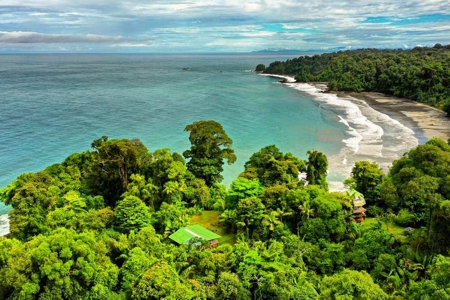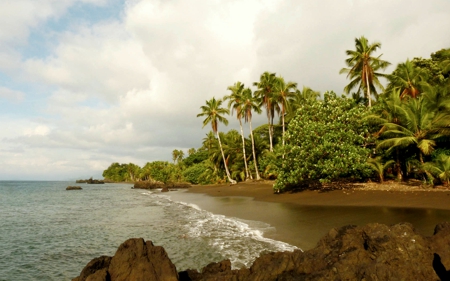|
NUQUI
-
Wikipedia:
Nuquí is
a municipality and town in the Chocó
Department, Colombia.
The municipality of Nuquí is located in the department of Chocó in
the Western part of Colombia between the mountainous area of Baudó
and the Pacific Ocean. Nuquí has a great cultural diversity as well
as a big variety of flora and fauna. Nuquí has 8.096 inhabitants,
3095 of which live in the municipal capital. The majority of the
population are Afro-Colombians, another part of the population is
represented by members of indigenous tribes. Nuquí was founded as a
municipality in 1915, before it was a sub-division of the
municipality Valle, Chocó
ABOUT
NUQUI, El Choco:
Compliments of KUKA Eco Lodge
The
Colombian Pacific coast is a unique place on the planet, occupying
the second place with the greatest biodiversity on the planet. Its
extensive coastal area populated with abundant solitudes, shelters
in its incredible beauty a virgin land where until time it has been
seduced and abandoned in this lost paradise.
The Embera Katíos indigenous people live in this territory with
descendants of African races who emigrated more than 400 years
ago. The Emberá, with their humble, simple and introverted spirit,
largely translate the silence that this place whispers in our
ear. The black race, descended from African slaves who escaped the
savagery of the Spanish at the time of the conquest, found in this
area the germination of a new Africa, and brought with them the
rhythm, the unalterable joy and the enormous strength that
characterizes them. . The black race lives with the Embera and
today, faithful to the harmony that this land professes, they
continue to live together in peace.
With the new arrival of other cultures, the ties of cooperation must
be strengthened. Health, education and the strengthening of identity
are keys so that these inhabitants can overcome and prepare for the
voracious modern world. Here all the inhabitants of the world will
meet united by the same spirit of goodness and beauty, and in this
way they will compose the most valuable treasure of spaces: its
people. |
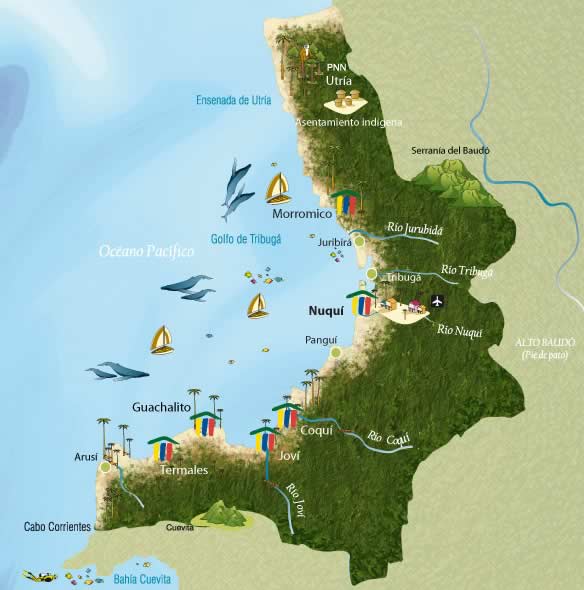 |
|
UTRIA NATIONAL PARK
Compliments of Wikipedia -
edited for brevity
The Utría
National Natural Park (Spanish: Parque
Nacional Natural Ensenada de Utría)
is a national
park in
the Chocó
Department,
Colombia. It contains diverse flora and fauna in a lush, mountainous
rainforest environment with some of the highest rainfall in the
world, at up to 10,000 millimetres (390 in) annually. The park also
protects the coastal marine environment, and is known for visits by humpback
whales,
who give birth in the lagoon after which the park is named, and sea
turtles who nest on the beaches.
Marine Environment:
There are coral reefs along the
shore that contain 11 of the 16 species of coral recorded in the
Pacific region, about 81 species of mollusks have been reported,
including Eastern Pacific giant conch and ark
clams which provide food to the local communities. There are
over 180 species of fish ranging from tiny goby fish
to the huge whale
shark.
Sea turtles come to the beaches in nesting season. The olive
ridley sea turtle is the most common turtle nesting on the
Cuevita beach, and there are sporadic records of other turtles such
as leatherback
sea turtle, hawksbill
sea turtle and green
sea turtle. Common
bottlenose dolphin and oceanic dolphins of the genus Stenella are
present year round. Occasional visitors include sperm
whale,
killer whale and Risso's
dolphin.
Humpback whales visit from June to November. They use Utría Cove
to give birth from August to October.
Forest Environment
Trees in the park include timber species as cohíba, the
symbol of the Chocó Department,used for building coastal boats
and used by the black and indigenous communities for making crafts.
There are also palms such as chontaduro and mil pesos that
are important sources of food for the local populations, and iraca which
is used to make crafts. There are various medicinal plants, and
seven of the ten species of mangroves found on the Colombian Pacific
coast.
Fauna in the forest include jaguar, cougar, brocket
deer, white-lipped
peccary, collared
peccary, mantled
howler, black-headed
spider monkey, giant
anteater, brown-throated
sloth, lowland
paca and Central
American agouti.
there are many reptiles and amphibians. There are about 380 species
of birds in all strata of the forest, a very high level of
diversity. |
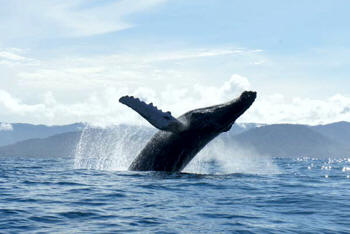
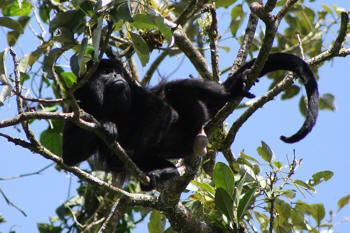 |
|
WEATHER
Compliments of Weather & Climate
Here are some average weather facts we collected from our historical
climate data:
-
On average, the temperatures are
always high.
-
A lot of rain (rainy season) falls
in the month of: January, February, March, April, May, June,
July, August, September, October, November and December.
-
The warmest month is July with an
average maximum temperature of 31°C (87°F).
-
The coldest month is September with
an average maximum temperature of 29°C (84°F).
-
August is the most wet month. This
month should be avoided if you are not a big fan of rain.
-
February is the driest month.
|
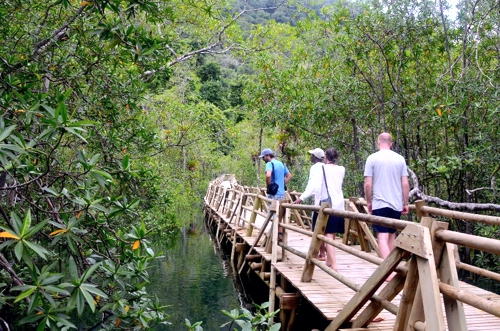 |




